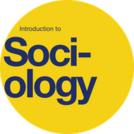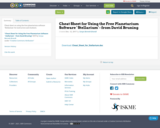
Cheat sheet on using the free planetarium software ‘Stellarium’ for instructors and students.
- Subject:
- Applied Science
- Material Type:
- Activity/Lab
- Date Added:
- 12/12/2017

Cheat sheet on using the free planetarium software ‘Stellarium’ for instructors and students.
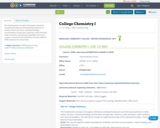
The fundamental concepts of inorganic chemistry including the physical and chemical properties of matter, atomic structure, chemical bonding, stoichiometry, the gas laws, solutions, acids and bases, redox reactions, and chemical equilibria. All course content created by Patricia Richard. Content added to OER Commons by Joanna Gray.

College Physics for AP Courses is designed to engage students in their exploration of physics and help them to relate what they learn in the classroom to their lives and to apply these concepts to the Advanced Placement test. Physics underlies much of what is happening today in other sciences and in technology, therefore the book includes interesting facts and ideas that go beyond the scope of the AP course to further student understanding. The AP Connection in each chapter directs students to the material they should focus on for the AP® exam, and what content — although interesting — is not necessarily part of the AP curriculum.
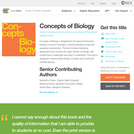
Concepts of Biology is designed for the introductory biology course for nonmajors taught at most two- and four-year colleges. The scope, sequence, and level of the program are designed to match typical course syllabi in the market. Concepts of Biology includes interesting applications, features a rich art program, and conveys the major themes of biology.

Examines intercultural communication, including cultural patterns, verbal and nonverbal communication codes and their practical application in today's diverse society.
Chapter 1 - Foundations of Culture
Chapter 2 - Understanding Cultural Identity
Chapter 3 - Social Construction of Cultural Identity
Chapter 4 - Cultural Biases
Chapter 5 - Taxonomies of Cultural Patterns
Chapter 6 - Understanding Intercultural Communication
Chapter 7 - Intercultural Communication Competence
Chapter 8 - Striving for Engaged and Effective Intercultural Communication

This brief instructor-facilitated activity asks students to observe a simple demonstration, record their observations, and apply their knowledge to other conditions. It was written by Johnathan Hugh Broome from University of Southern Mississippi.
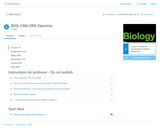
This Open Education Resource Core Curriculum course was developed with funding from Texas Higher Education Board - Open Educational Resources Grant Program (OERGP) 2018-2019 RFA # 20337. The course introduces students to the nature of life, concepts of biochemistry, metabolism, genetics, cellular and molecular biology. Students will learn about the various techniques used to study biology - cloning, gene editing and the exciting field of Genetic Engineering.
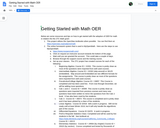
This is a brief explanation of how to access and use the MyOpenMath assignments for many math courses. It also includes some links to useful resources.

An explanation of the equations for percents. Emphasizes the importance of the base.
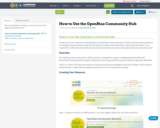
Tips and guidelines to help you create resources that align with OpenStax titles
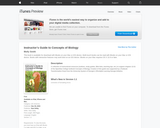
This Instructor’s Guide contains the brief outlines of Chapters 12-21 as found in Concepts of Biology, though some underwent revision. Also, instructors will find detailed outlines of the text for use in lecturing, as well as structured outlines that may be used by students to take notes while reading the chapter or during lecture. All outlines are derived from the OpenStax text. Additionally, study guides that contain a variety of questions are provided for students.
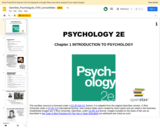
Lecture slides for Intro to Psychology. Here is the link to all slides: https://drive.google.com/drive/folders/1Ac_TUNnq2UIQu-ujAfd2-hlcTLWfY9dK
It is adapted from the original OpenStax version, © Rice University under a CC BY 4.0 International license; new content slides were created by Ariel Ladum and are noted in the footnotes. Unattributed images are © Rice University, OpenStax, under CC BY 4.0 license. Images included on the basis of fair use as described in the Code of Best Practices for Fair Use in Open Education are attributed and noted as such.
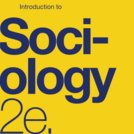
Introduction to Sociology 2e adheres to the scope and sequence of a typical, one-semester introductory sociology course. It offers comprehensive coverage of core concepts, foundational scholars, and emerging theories, which are supported by a wealth of engaging learning materials. The textbook presents detailed section reviews with rich questions, discussions that help students apply their knowledge, and features that draw learners into the discipline in meaningful ways. The second edition retains the book’s conceptual organization, aligning to most courses, and has been significantly updated to reflect the latest research and provide examples most relevant to today’s students. In order to help instructors transition to the revised version, the 2e changes are described within the preface.
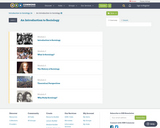

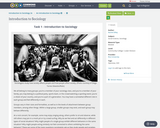

Explain concepts central to sociologyUnderstand how different sociological perspectives have developed
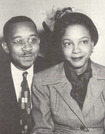
Explain why it is worthwhile to study sociologyIdentify ways sociology is applied in the real world

